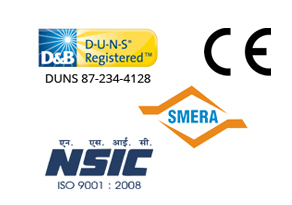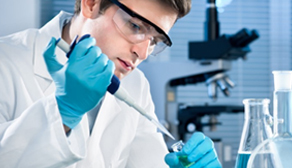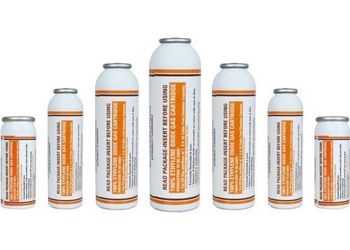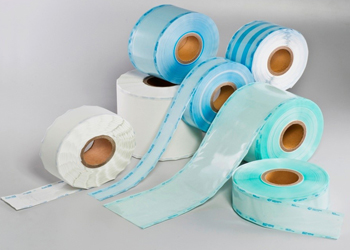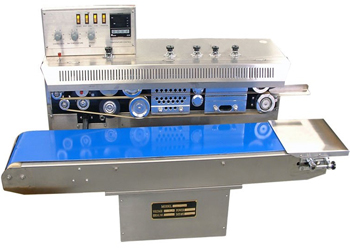Denmark’s healthcare sector is experiencing significant expansion, driven by advancements in medical technology, increased demand for healthcare services and a growing population. As the sector grows, so does the need for stringent sterilization practices to ensure the safety and efficacy of medical devices, instruments and equipment. Medical sterilization plays a critical role in maintaining hygienic standards and preventing infections in hospitals, clinics and other healthcare facilities.
In Denmark, the sterilization of medical equipment has become an integral part of the healthcare infrastructure, particularly as the demand for sterile medical devices increases. This rise in medical sterilization practices is driven by the advancement of medical device technology and the expanding scope of healthcare services. The sterilization of medical devices, instruments and equipment is essential to maintaining patient safety and Denmark is increasingly adopting advanced sterilization technologies to meet these demands.
This article explores the rise of medical equipment sterilization within Denmark’s expanding healthcare sector, highlighting the growing need for medical sterilizers, the impact of technological advancements and the evolving regulatory landscape.
The Growing Healthcare Infrastructure in Denmark
Denmark’s healthcare system is widely regarded as one of the most efficient in the world, with a strong focus on accessibility, quality of care and patient safety. Over the past decade, the country has experienced substantial growth in its healthcare infrastructure, particularly in major cities like Copenhagen, Aarhus and Odense. This expansion includes the establishment of new hospitals, specialized clinics and research institutions, which in turn has led to an increased demand for sterilized medical equipment.
Expansion of Healthcare Facilities
As the healthcare sector continues to grow, Denmark has invested heavily in expanding its medical facilities. New hospitals are being constructed and existing ones are undergoing modernization to keep up with the demands of an aging population and a growing number of medical procedures. This rapid expansion requires a robust sterilization process to ensure that medical instruments and devices meet the highest standards of hygiene and safety.
Increased Demand for Medical Devices
With the growth of healthcare facilities, the demand for sterilization for medical devices have increased. As medical devices become more complex and specialized, sterilization practices have had to evolve to ensure that these devices are free from harmful microorganisms and safe for use in patient care. The rise in medical procedures, including surgeries, diagnostics and treatments, further increases the need for consistent and effective sterilization practices.
The Importance of Medical Equipment Sterilization in Denmark
Sterilization is a vital process in the healthcare sector, as it prevents the transmission of infections and ensures that medical devices are safe for use. Denmark, with its strong focus on patient safety, has implemented advanced sterilization technologies to meet the increasing demand for sterile medical instruments and devices.
Sterilization of Medical Instruments and Devices
Medical instruments, ranging from surgical tools to diagnostic equipment, must undergo rigorous sterilization procedures to prevent cross-contamination and safeguard patient health. The sterilization of medical instruments is crucial in maintaining the sterile environment required for surgeries, diagnostic procedures and other treatments. In Denmark, hospitals and healthcare facilities employ advanced sterilizers to ensure that these instruments are completely free from bacteria, viruses and other pathogens.
Sterilization of Medical Devices
The sterilization of medical devices such as catheters, syringes and implants are essential to prevent infections and ensure that the devices perform as intended. With the rise of advanced medical technologies, Denmark’s healthcare sector has embraced modern sterilization methods to ensure the safety of these devices. This includes the use of ETO sterilization, which is particularly effective for heat-sensitive devices like plastic syringes and electronic medical equipment.
The Role of ETO Sterilization in Denmark’s Healthcare Sector
Ethylene oxide (ETO) sterilization is one of the most widely used methods for sterilizing medical devices and equipment. It is particularly effective for heat-sensitive items that cannot withstand traditional high-temperature sterilization processes. ETO sterilization has become a cornerstone of Denmark’s sterilization practices, especially in hospitals, clinics and research institutions that rely on delicate medical equipment.
Adoption of ETO Sterilizers in Denmark
Denmark’s expanding healthcare infrastructure has led to an increase in the use of ETO sterilizers. These machines offer a non-thermal sterilization process that can penetrate porous materials and effectively eliminate harmful microorganisms. As medical devices and instruments become more sophisticated, the need for sterilization systems that can handle a wide range of materials, has made ETO sterilization an essential part of Denmark’s healthcare sector.
Regulatory Requirements for ETO Sterilization
Denmark has stringent regulations in place to ensure that medical sterilization processes meet international standards. These regulations cover the use of sterilizers, including ETO systems and ensure that medical devices and instruments are thoroughly sterilized before use in patient care.
Technological Advancements in Medical Sterilization in Denmark
As the demand for sterilized medical equipment continues to rise, Denmark has seen significant advancements in sterilization technology. These innovations have helped improve the efficiency, safety and effectiveness of sterilization processes in healthcare facilities across the country.
Automated Sterilization Systems
Modern sterilization systems, including fully automated ETO sterilizers, have revolutionized the sterilization process in Denmark. These systems reduce the need for manual intervention, improving efficiency and minimizing human error. Automation ensures that sterilization cycles are consistent, providing reliable results every time.
Improved Sterilization Methods
In addition to ETO sterilization, Denmark has seen advancements in other sterilization methods, including steam sterilization and radiation sterilization. These methods are used in combination with ETO sterilization to ensure the highest standards of hygiene and safety in medical equipment. The continued development of sterilization technologies has helped Denmark maintain its reputation for high-quality healthcare services.
The Regulatory Landscape for Medical Equipment Sterilization in Denmark
Denmark has a well-established regulatory framework for the sterilization of medical equipment, ensuring that all medical devices and instruments meet the required safety and hygiene standards. As part of the European Union, Denmark adheres to EU regulations that govern medical device sterilization. These regulations ensure that all medical devices, including those sterilized using ETO systems, meet the necessary safety standards before they can be used in patient care. Denmark’s healthcare sector is committed to complying with these regulations, ensuring that patients receive the highest level of care and safety.
Quality Assurance and Standards
To maintain the safety and efficacy of sterilized medical devices, Denmark’s healthcare facilities are required to implement rigorous quality assurance processes. These include routine testing of sterilization equipment, regular audits and compliance with international standards for medical device manufacturing and sterilization. The focus on quality assurance ensures that medical devices and instruments are consistently sterilized to the highest standards.
The Future of Medical Equipment Sterilization in Denmark
As Denmark’s healthcare sector continues to grow, the need for advanced sterilization practices will only increase. The rise in complex medical devices, coupled with the growing demand for high-quality healthcare services, is driving the need for innovative sterilization technologies.
Focus on Sustainable and Safe Sterilization Practices
As medical equipment sterilization becomes more integral to Denmark’s healthcare system, there will be a continued focus on ensuring that sterilization practices are both effective and environmentally responsible. The evolving landscape of medical sterilization may see innovations that further reduce the environmental impact of sterilization processes, while continuing to prioritize patient safety.
Conclusion:
The expanding healthcare sector in Denmark is driving the need for more sophisticated and efficient sterilization processes. Medical sterilization is a critical component of patient safety and the growing demand for sterile medical devices and instruments is fueling the rise of advanced sterilization technologies, particularly ETO sterilization. As the healthcare sector continues to expand, Denmark is embracing innovative sterilization methods to ensure that its medical devices and instruments meet the highest safety standards.
With ongoing advancements in sterilization technology and a robust regulatory framework, Denmark is well-positioned to maintain its reputation for delivering high-quality healthcare services. The continuous focus on medical sterilization ensures that the safety of patients remains a top priority, while also supporting the growing demand for medical devices in the country’s expanding healthcare sector.

